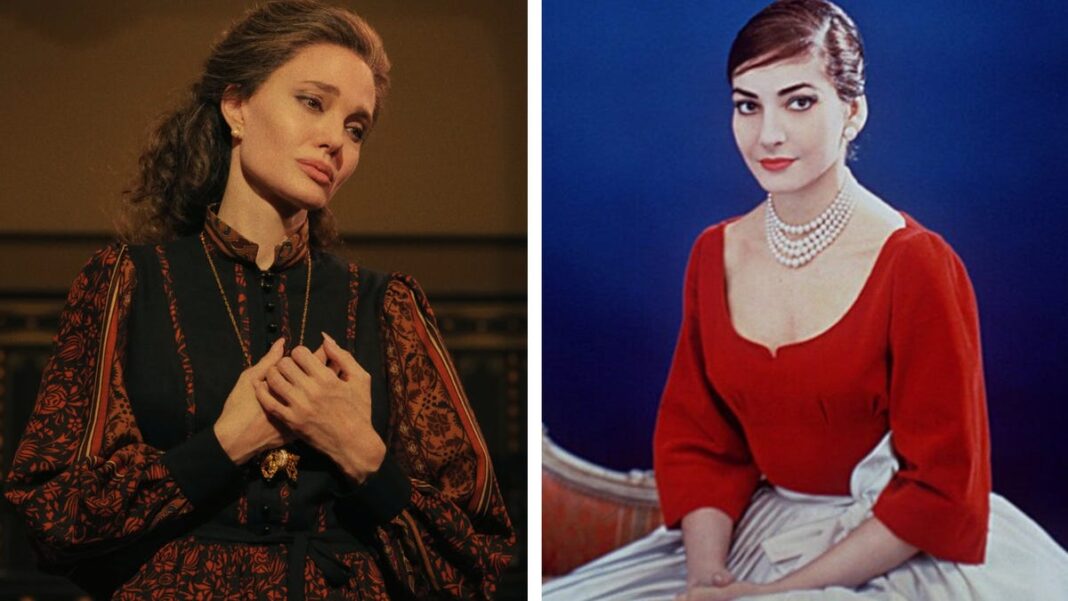Fact-checking ‘Maria’: What caused the death of Maria Callas? Did she know JFK?
Caution: Major plot elements of the film “Maria” (currently on Netflix) are shared below.
How can you portray someone as legendary as Maria Callas in a film lasting two hours?
That was the task for screenwriter Steven Knight (“Spencer”), who collaborates again with director Pablo Larraín for the new film “Maria,” starring Angelina Jolie as the tragic opera singer striving to regain her singing voice.
“I aimed to encapsulate her life experiences into a crucial span of days,” Knight explains. “Her final days were notably introspective: she worried deeply about her vocal recovery and reflected on her past loves. During that time, she was quite hurt by a review from a critic.”
The film depicts Callas being confronted by a reporter who secretly recorded a rough rehearsal and threatened to publish it. Knight drew heavily from personal accounts provided by Callas’ butler, Ferruccio (Pierfrancesco Favino), and her housekeeper, Bruna (Alba Rohrwacher), who were her closest aides during her final days.
Here’s a rundown of what is accurate and what is dramatized:
Was Maria Callas a drug addict?
“Maria” portrays the opera singer as she roams through her lavish apartment in Paris, taking pills and having visions of a journalist named Mandrax (Kodi Smit-McPhee), a personified version of her sedative. According to Knight, Callas struggled with prescription medication throughout her life.
“Consider that this was the ‘50s and ‘60s, a time when the repercussions of such actions weren’t well understood,” Knight mentions. “ She consistently battled weight issues and was willing to resort to drugs to manage that. Later, as her career declined, she started using substances like Mandrax to numb the pain. Imagine being at the top of your game, and then suddenly no one pays attention anymore?”
What led to Maria Callas’s death?
Callas passed away in her Paris apartment on September 16, 1977, at the age of 53. The official cause of death was reported as a heart attack, but for years, many have speculated that she may have taken her own life or succumbed to a progressive illness like dermatomyositis.
“A progressive condition is something that many believe and would be recognized now,” Knight explains. “I firmly believe it wasn’t suicide. Public figures like Maria Callas, Princess Diana, or Marilyn Monroe become targets of fascination. (The public) is eager to claim a piece of them, and death isn’t enough to end that. Conspiracy theories will always persist.”
Did Maria Callas have a romantic involvement with Aristotle Onassis?
Onassis, a wealthy Greek shipping magnate, met Callas at a gala in 1957. Both were married at the time, but their affair stretched over ten years until he left her for Jackie Kennedy in 1968. Many historians regard Onassis as Callas’ “great love,” although the film depicts him as a controlling figure who made negative remarks about her appearance.
In reality, “it was a disastrous, flawed, and complicated relationship,” Knight reflects. “And everything unfolded in the public eye, especially when he announced his engagement to Jackie.” Despite their tumultuous relationship, “I truly believe she had genuine feelings for him, and even as he neared his death, he admitted that Maria was the woman he loved.”
Did Maria Callas experience an abortion or miscarriages?
Many historians believe that Callas had a strong desire to become a mother, but was unable to do so. The film suggests she experienced two miscarriages, and at one point she tells Mandrax, “My body declined the invitation to make another self.” Furthermore, author Arianna Huffington noted in her book from 1981, “Maria Callas: The Woman Behind the Legend,” that Onassis pressured her into having a third abortion in 1966.
“I didn’t want to delve too deeply into this topic,” Knight mentions. “It’s incredibly painful and personal, but there are rumors suggesting Onassis forced her to terminate a pregnancy. There isn’t any confirmation or evidence, although I’ve always believed she was resilient enough to make her own choices.”
Was Maria Callas friends with John F. Kennedy?
The film illustrates Callas in attendance at John F. Kennedy’s birthday celebration in 1962. However, in reality, she performed two arias at this occasion. The movie imagines a scenario where Callas and Kennedy share a meal together, during which she rejects his advances and alludes to Jackie and Aristotle’s affair. Callas expresses to Kennedy, “You and I belong to a very small group of privileged souls who can go wherever we please in this world. But we can never truly escape.”
“There’s no evidence that Maria and Kennedy ever had breakfast together,” Knight states. “Yet, I found it intriguing to envision these two figures together. I wanted to portray them as if they were trapped in their self-created worlds.”
Where did Maria Callas last perform?
In reality, Callas’s last public performance took place in Sapporo, Japan, in November 1974, just about three years before her passing. The film ends with her poignantly gazing out of her apartment window while singing “Vissi d’arte” from Puccini’s opera “Tosca.” Although this emotional scene may appear to be a dramatic cinematic conclusion, it is rooted in some reality.
“There are stories suggesting that in her final days, Callas would play her own music and sing along in her apartment,” Knight notes. “This was a significant moment for her since she had never listened to her own music before. So, I like to believe that there were people outside her apartment, listening to her final performance.”

